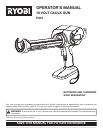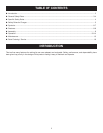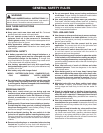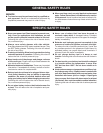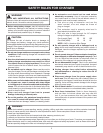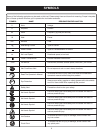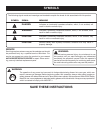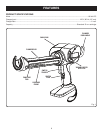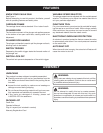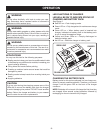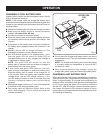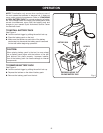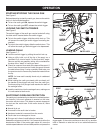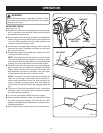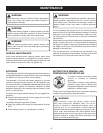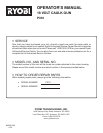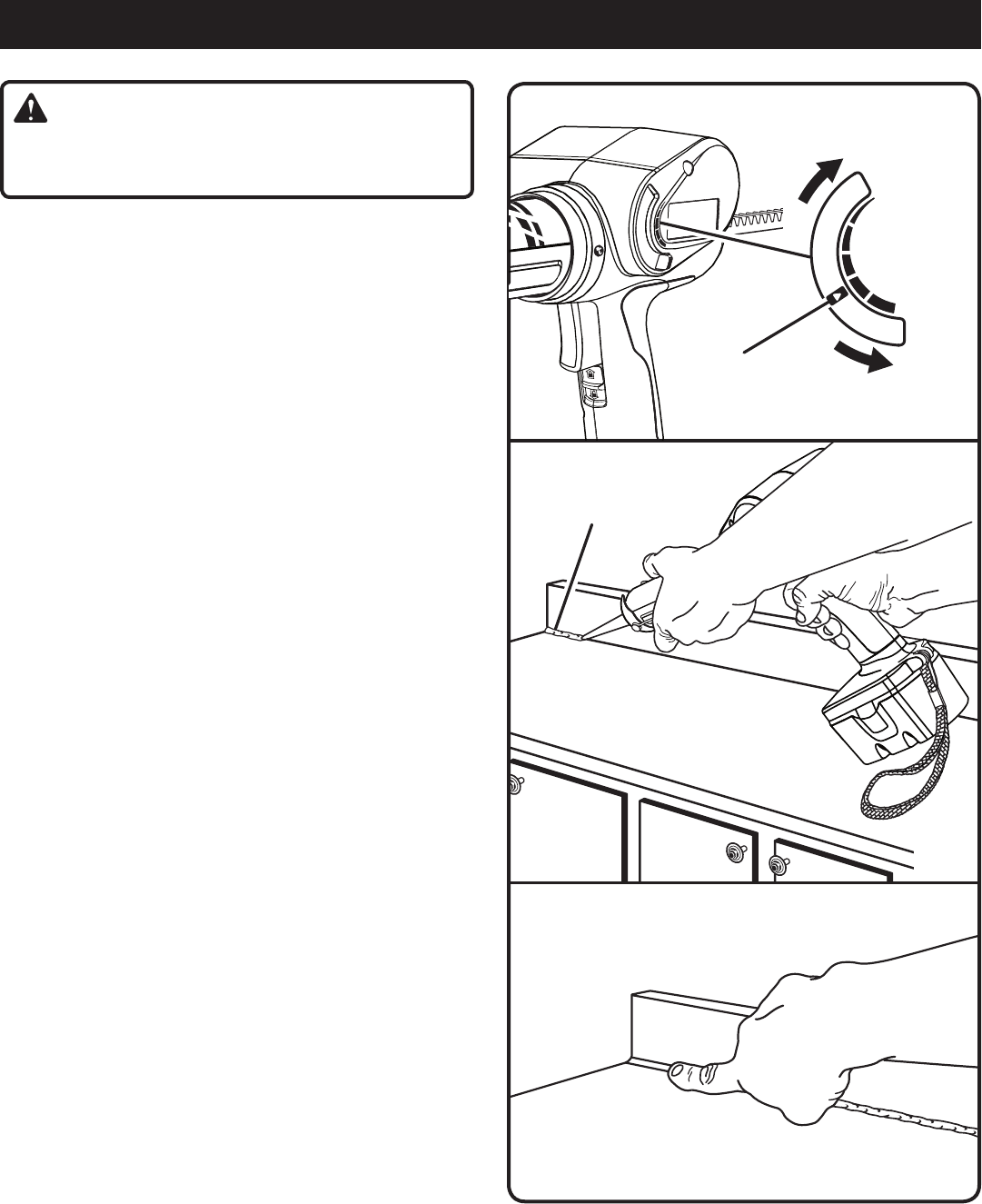
14 15
OPERATION
Fig. 8
Fig. 10
WARNING:
Battery tools are always in operating condition. There-
fore, switch should always be locked when not in use or
carrying at your side.
APPLYING CAULK
See Figures 8 - 10.
n �Prepare the surface to be caulked by removing any dust,
dirt, or remnants of old caulking. Make sure the area to
be caulked is clean and dry.
n Set the speed of the caulk gun to match your application
needs, using just enough caulk to do the job. Experiment
in an out-of-the-way area to find the best speed to use
to deliver the caulk bead you want.
n Hold the gun at a slight angle. If filling a crack, insert the
spout into the crack, if possible; otherwise, run the caulk
gun along the surface.
n Squeeze the trigger on the caulk gun, allowing the caulk
to extrude from the tube tip.
NOTE: If the bead of caulk is too narrow, re-cut the nozzle
to provide a larger opening. However, it is better to apply
a thin bead of caulk and add a little more if necessary than
to apply too much and attempt to remove the excess.
n Carefully move the caulk gun at an even pace along the
gap to be filled as you continue to depress the switch
trigger. Make sure the caulk comes in full contact with
both application surfaces. If necessary, use your finger
to gently press the caulk into a corner or crack.
NOTE: The best fill is usually achieved by pushing the
caulk out into the gap in a forward motion. However, in
some cases (particularly where the side materials are
rough or uneven), a pulling motion may work better as
the cartridge will be less likely to get snagged along the
joint.
n The motor will shut off automatically when a caulk tube
becomes empty. Pull the plunger rod back and replace
the caulk tube as necessary.
n �To end the caulk bead, release the switch trigger.
n Draw a moistened finger or other “smoothing tool” along
the caulk bead after applying. This will help the caulk
adhere to the application surfaces and will create a clean,
finished appearance.
n Use a damp towel or rag to clean off any excess caulk.
VARIABLE SPEED
SELECTOR
LOW SPEED
HI SPEED
Fig. 9
CAULK BEAD



